
THE SCIENCE BEHIND MUSCLE REPAIR AND HYPERTROPHY
In the world of fitness and health, the importance of sustaining adequate muscle mass extends beyond mere aesthetics. Research consistently highlights the multifaceted benefits of muscle mass, including improved fat-burning efficiency, a strengthened immune system and enhanced energy levels. Furthermore, muscle mass acts as a vital safeguard for joint health. Insufficient muscle mass may lead to issues like back pain, bad posture, and an elevated risk of falls, particularly among older adults [3,4,5,11].
This article explores the basics of muscle biology, covering the muscle recovery process, the various types of muscle fibres, and how they respond to ageing and different exercise regimens.

MUSCLE BIOLOGY: TYPES OF MUSCLE FIBRES AND THEIR FUNCTIONAL ROLES
To understand the mechanisms behind muscle function and regeneration, it is essential to explore the different types of muscle fibres and how they react to various forms of exercise.
Muscles include primarily two types of fibres: slow-twitch and fast-twitch. Slow-twitch fibres excel in endurance activities, supporting prolonged exertions requiring low to moderate force. In contrast, fast-twitch fibres are tailored for short bursts of high power, facilitating explosive and powerful movements. Notably, both low-to-moderate and high-intensity exercises recruit a mix of slow and fast-twitch fibres. However, the proportion and intensity of engagement may vary depending on the activity's nature and duration.
THE EFFECT OF DIFFERENT TYPES OF EXERCISES ON MUSCULAR RECOVERY
For fitness aficionados, the terms 'concentric' and 'eccentric' muscular contractions are likely familiar concepts. For those embarking on their physical training journey, a brief overview: concentric contractions occur as muscles shorten during force production, such as in the upward motion of a bicep curl. These contractions are prevalent in activities such as uphill walking, cycling, and swimming.
Conversely, eccentric contractions are characterised by muscles lengthening while still generating force, exemplified by the downward motion of a bicep curl.
Though both forms of exercise are integral to overall fitness, eccentric movements—like downhill walking/running or quick directional changes—may necessitate prolonged recovery periods due to the heightened muscle damage and stress they induce [2].
Training sessions can be specifically designed to focus on either eccentric or concentric movements, depending on the sport's specific requirements. For example, elite sprinters might concentrate on the concentric phase during exercises such as deadlifts to prevent gaining too much muscle mass. Research suggests the eccentric phase of these exercises tends to increase muscle size, potentially slowing sprinting times [10].

MUSCLE FIBRE DISTRIBUTION IN ATHLETES VS NON-ATHLETES
Unsurprisingly, endurance athletes, especially elite athletes, often have a higher proportion of slow-twitch muscle fibres, typically ranging from 70–80%. In contrast, elite strength athletes like powerlifters tend to show a greater prevalence of fast-twitch muscle fibres. For the general population, most individuals have a more balanced distribution, with slow and fast-twitch muscle fibres in roughly equal proportions, usually around 50–50 or 40–60% [1,9].
THE PROCESS OF POST-EXERCISE MUSCLE REGENERATION
Engaging in intense exercise, especially resistance training, can result in micro-tears within muscle fibres, prompting the necessity for repair. This constitutes the first stage of the process, which is the muscle damage itself.
Following muscle damage, the body triggers a critical inflammatory response. This involves the recruitment of immune cells to the site of injury, along with the release of growth factors and cytokines—proteins that signal and regulate the immune response. This cascade is crucial for repairing the damaged muscle fibres, as it helps to remove debris, fights potential infection, and initiates the tissue healing process. Contrary to the common perception that inflammation in our bodies is always something to be stopped, it's crucial to note that this stage is vital for initiating the regeneration process.
The next step is the activation of 'satellite cells', located on the surface of muscle fibres, playing a key role in facilitating the fusion of existing muscle fibres or forming new myofibres, contributing to muscle repair.
As a result of this repair mechanism, protein synthesis is increased, leading to the rebuilding and strengthening of muscle fibres. This process is known as hypertrophy, where the muscle fibres grow in both size and number, contributing to overall strength. [8].
If you'd like to read about ways to speed up the recovery process, go to our article HOW TO REDUCE MUSCLE SORENESS AND SPEED UP RECOVERY.

EFFECTS OF AGEING ON MUSCLE FIBRES
Ageing often results in the progressive loss of fast-twitch muscle fibres. Strength training becomes crucial to preserving these fibres and preventing age-related muscle decline. The recommended modes of resistance training include free weights, medicine ball training, resistance bands, and well-designed resistance machines catering to individuals with different needs and abilities, including older adults or those with orthopaedic limitations. [6,11].
CHALLENGES IN STUDYING MUSCLE FIBRES
The study of muscle fibres presents challenges, primarily due to the invasive and time-consuming process of muscle biopsy. Within a muscle sample, the intricate task of separating and identifying the nature of each muscle fibre adds to the complexity. Moreover, human muscle, known for its greater variability compared to animal muscle (commonly used in studies), further complicates the differentiation of fibre types [7].

FINAL THOUGHTS
The age-related decline in muscle mass, particularly in fast-twitch muscle fibres, stresses the importance of endurance training tailored to individual fitness levels across all life stages. Beyond just protecting joints, maintaining adequate muscle mass strengthens the immune system and boosts energy levels, thereby lowering the risk of injuries and falls.
In addition to the various benefits associated with our FLEXIBLE collagen, evidence suggests that it can enhance the synthesis of muscle proteins like creatine —a compound naturally found in muscle cells, known for aiding muscle growth after exercise. Moreover, quality collagen peptides offer a viable solution for those seeking to alleviate muscle soreness post-exercise [3,12].


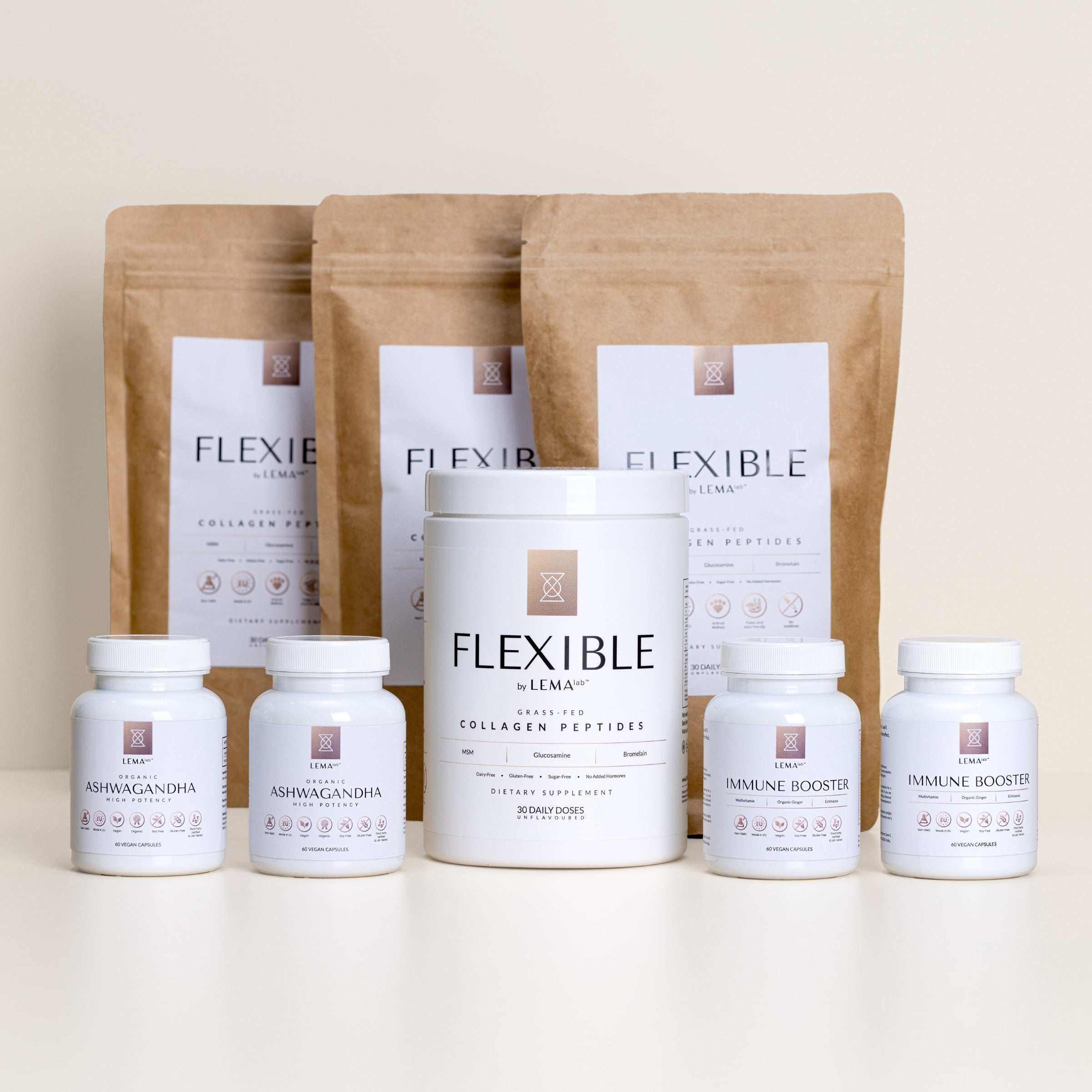
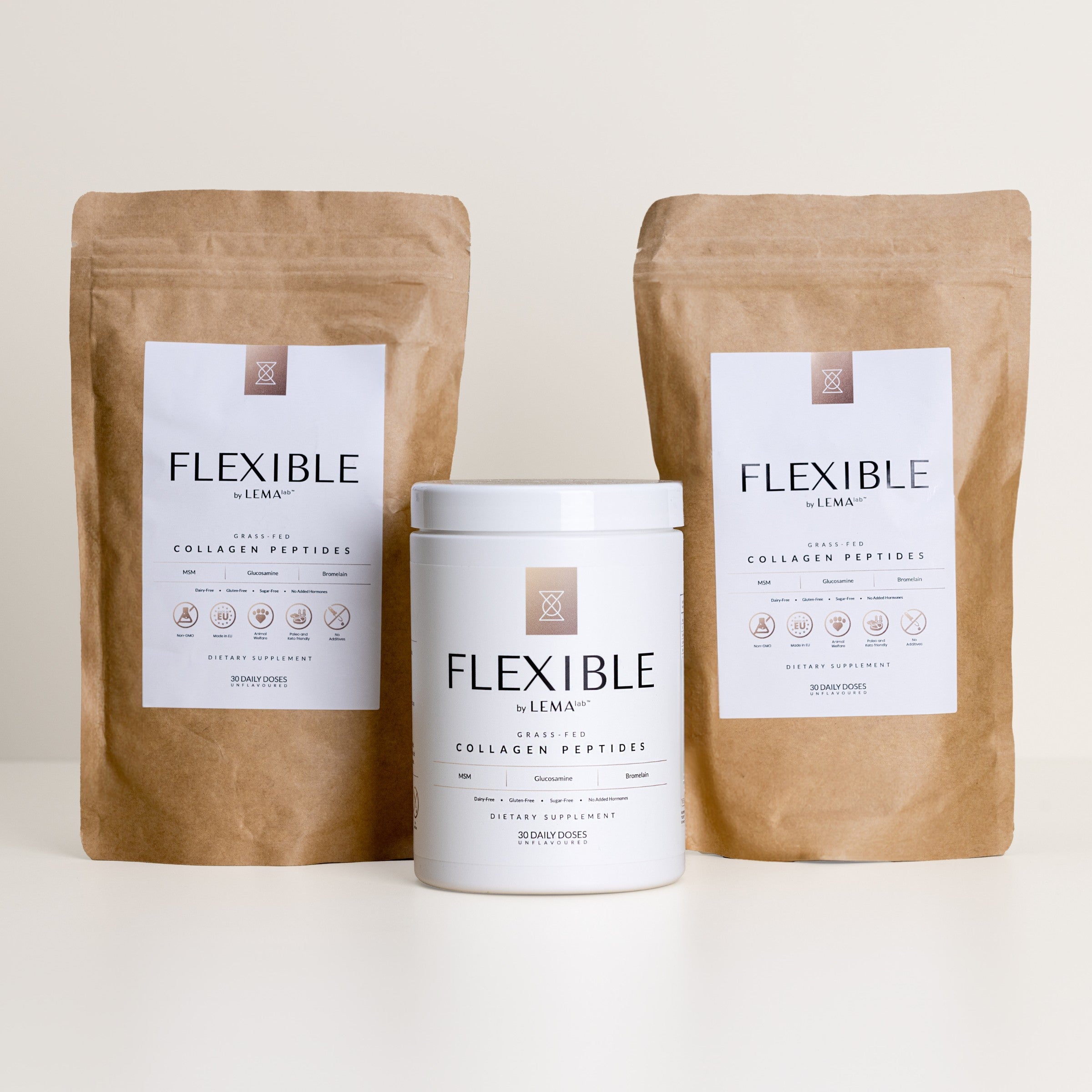

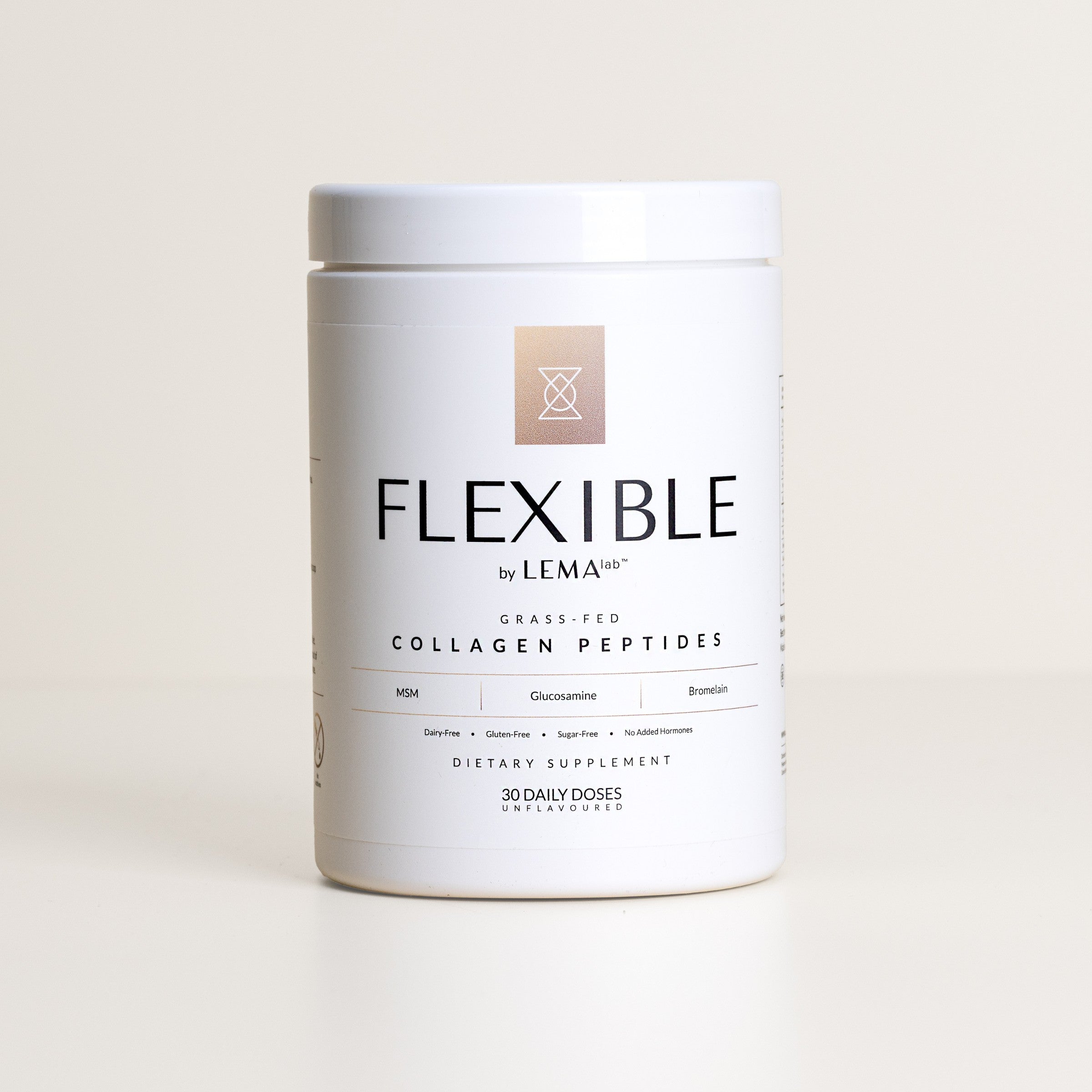

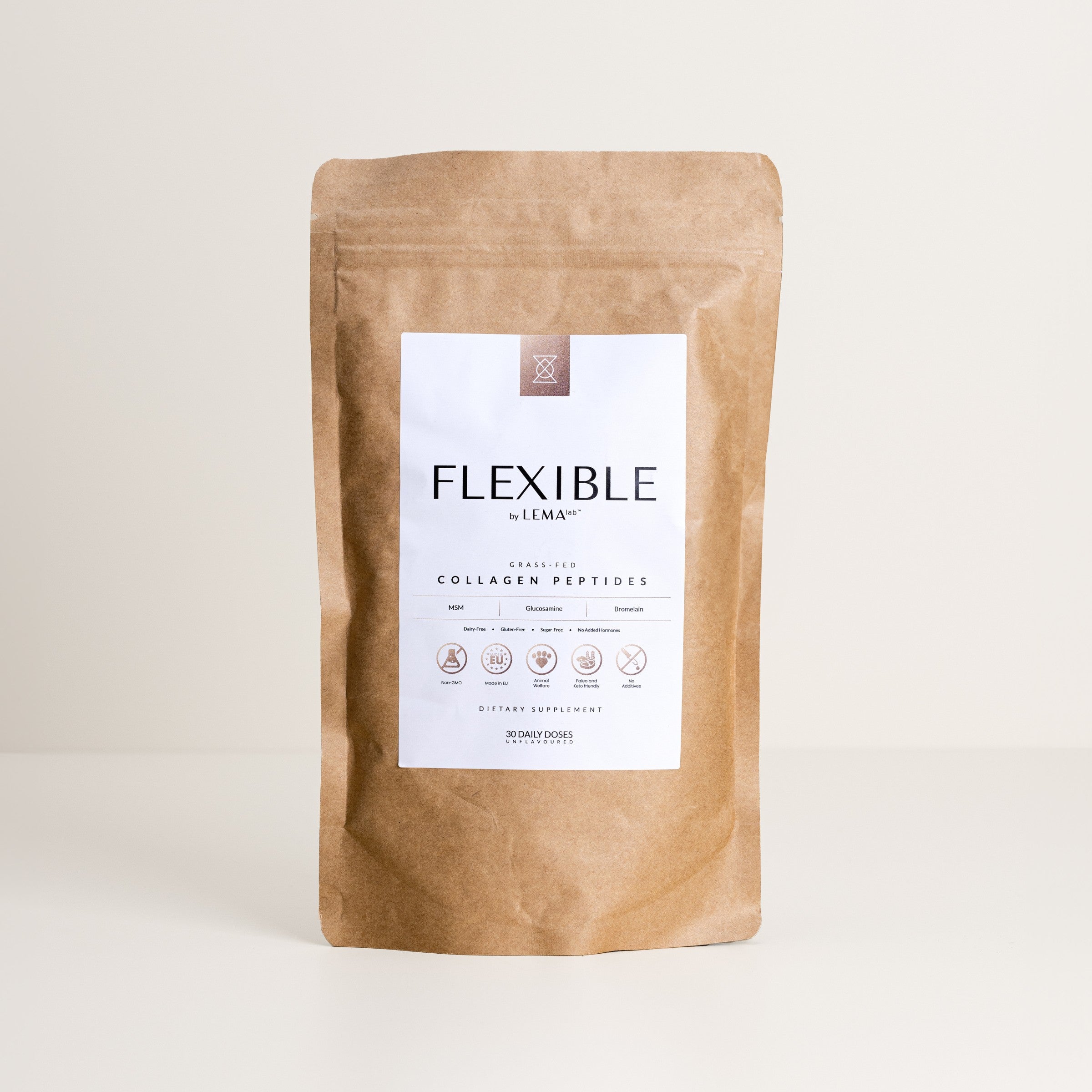



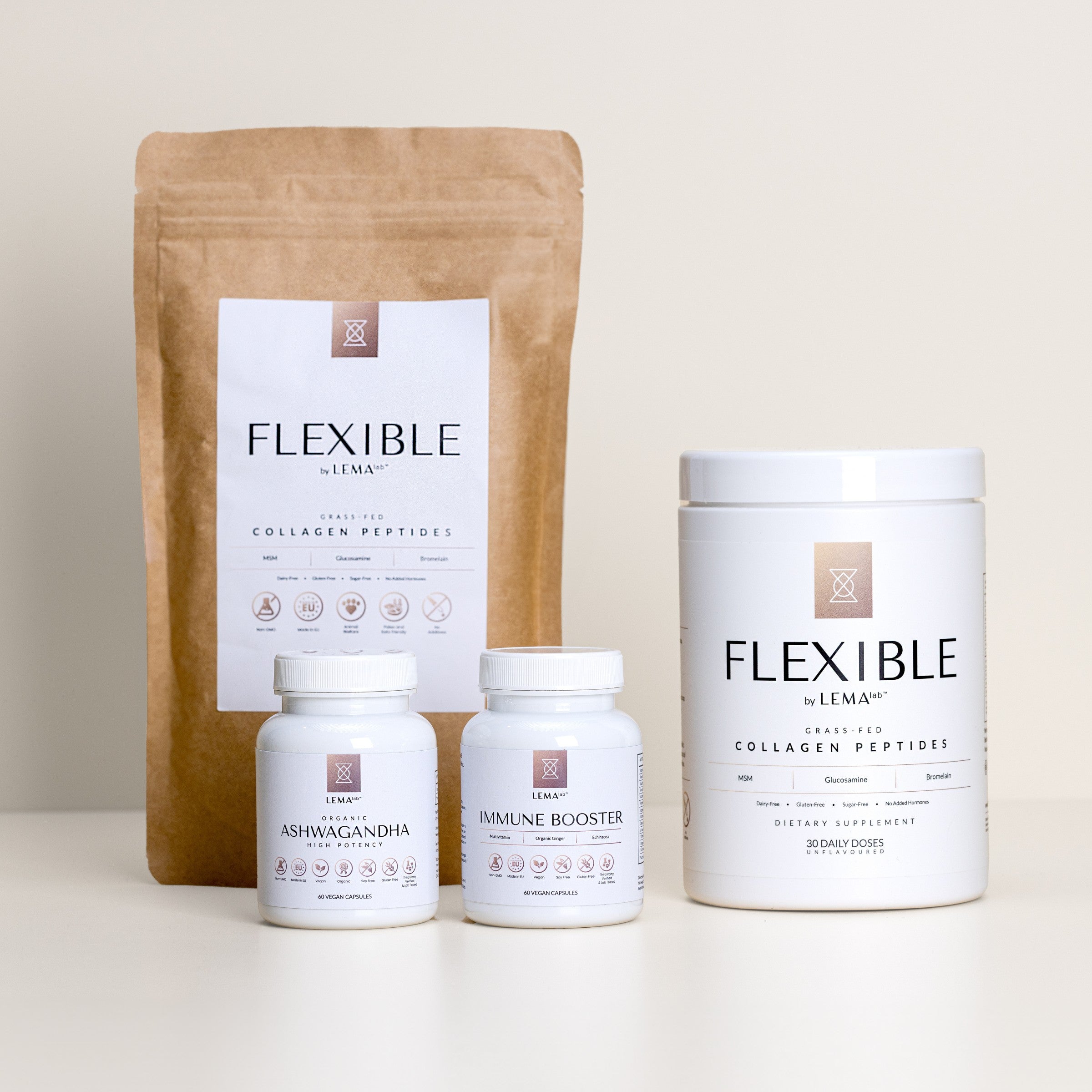
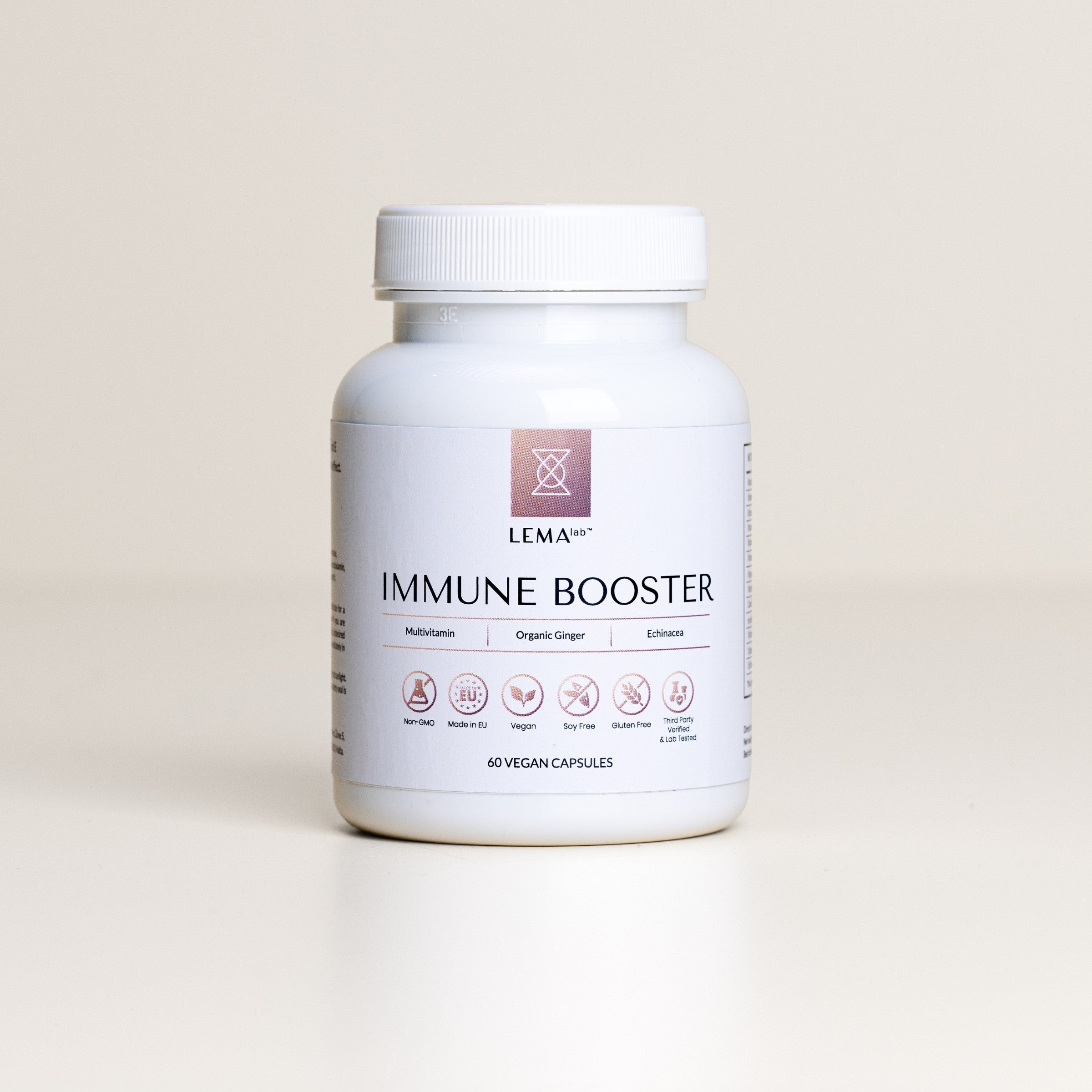

Leave a comment
This site is protected by hCaptcha and the hCaptcha Privacy Policy and Terms of Service apply.